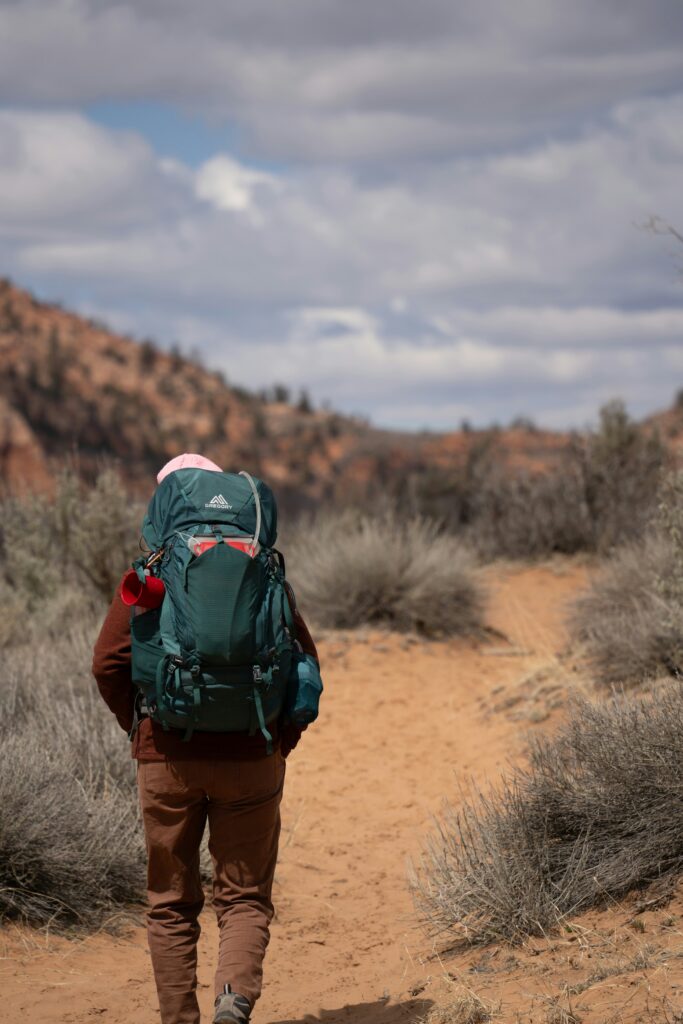Safety and Awareness Tips for Women Hiking Alone

Hiking alone can be a deeply rewarding experience, offering solitude, reflection, and a unique connection with nature. However, it also comes with its own set of challenges and risks, especially for women. By taking the necessary precautions and being aware of potential dangers, you can enjoy a safe and empowering solo hiking adventure. Here are some essential tips and considerations for women hiking alone.
Planning and Preparation
- Research the Trail
- Difficulty Level: Choose a trail that matches your fitness and experience level. Start with well-marked, popular trails before progressing to more remote or challenging ones.
- Trail Conditions: Check recent reports or reviews for information about trail conditions, weather, and any potential hazards.
- Permits and Regulations: Ensure you have any necessary permits and are aware of the trail’s rules and regulations.
- Share Your Plans
- Tell Someone: Inform a trusted friend or family member of your hiking plans, including your expected route, start time, and estimated return time.
- Check-In: Arrange to check in with them at specific times during your hike, and let them know when you have safely returned.
- Pack the Essentials
- Navigation Tools: Carry a map, compass, and GPS device or smartphone with offline maps.
- First Aid Kit: Include basic first aid supplies such as bandages, antiseptic wipes, pain relievers, and any personal medications.
- Hydration and Nutrition: Bring enough water for the entire hike, as well as high-energy snacks like nuts, dried fruit, and energy bars.
- Safety Gear: Carry a whistle, multi-tool, flashlight or headlamp, and pepper spray or a personal alarm for added security.
- Clothing: Dress in layers to adjust to changing weather conditions. Wear moisture-wicking fabrics and sturdy, comfortable hiking boots.
- Prepare for Emergencies
- Emergency Contacts: Have a list of emergency contacts, including local park authorities or rangers, saved in your phone.
- Self-Defense: Consider taking a self-defense class to build confidence and learn techniques to protect yourself if needed.
On the Trail

- Stay Aware of Your Surroundings
- Trust Your Instincts: If something feels off or you encounter someone who makes you uncomfortable, trust your instincts and take action to ensure your safety.
- Avoid Distractions: Keep your focus on the trail and your surroundings. Avoid using headphones, which can make you less aware of what’s happening around you.
- Follow Trail Markings
- Stay on the Path: Stick to well-marked trails to avoid getting lost and to minimize your impact on the environment.
- Trail Signs: Pay attention to trail signs and markers to ensure you are on the right path.
- Pace Yourself
- Know Your Limits: Hike at a pace that is comfortable for you and take regular breaks to rest and hydrate.
- Watch the Time: Be mindful of the time and aim to finish your hike well before dark. Carry a headlamp or flashlight in case you are delayed.
- Stay Connected
- Cell Phone: Keep your cell phone charged and in a waterproof case. While service may be limited in remote areas, having a phone can be crucial in emergencies.
- Emergency Communication Devices: Consider carrying a satellite phone or a personal locator beacon (PLB) for areas with no cell coverage.
Navigating Potential Hazards
- Wildlife Encounters
- Stay Calm: If you encounter wildlife, stay calm and avoid sudden movements. Most animals will not see you as a threat if you give them space.
- Bear Safety: In bear country, carry bear spray and know how to use it. Make noise to avoid surprising bears and store food securely.
- Weather Changes
- Check Forecasts: Before your hike, check the weather forecast and be prepared for sudden changes.
- Seek Shelter: If you encounter severe weather, seek shelter and wait for conditions to improve.
- Trail Obstacles
- Water Crossings: Be cautious when crossing streams or rivers. If the water is too high or fast, find an alternate route.
- Rough Terrain: Use trekking poles for stability on uneven or steep terrain. Take your time and watch your footing.
Mental and Emotional Preparedness
- Confidence and Positivity
- Stay Positive: Maintaining a positive mindset can help you navigate challenges and enjoy your hike more fully.
- Celebrate Small Wins: Acknowledge your progress and achievements, no matter how small.
- Self-Care
- Take Breaks: Allow yourself to take breaks, rest, and enjoy the scenery. Don’t rush your hike.
- Mindfulness: Practice mindfulness by being present and appreciating the beauty of nature around you.
What to Bring: A Comprehensive Packing List
- Navigation
- Map
- Compass
- GPS device or smartphone with offline maps
- Safety and Emergency
- First aid kit
- Whistle
- Bear bell or bear horn
- Multi-tool
- Flashlight or headlamp
- Emergency blanket
- Personal alarm or pepper spray
- Emergency contact list
- Hydration and Nutrition
- Water bottles or hydration reservoir
- Water purification tablets or filter
- High-energy snacks (nuts, dried fruit, energy bars)
- Lightweight meals if hiking all day or overnight
- Clothing
- Moisture-wicking base layers
- Insulating layers (fleece or down jacket)
- Waterproof and windproof jacket
- Sturdy, comfortable hiking boots
- Extra socks
- Hat and gloves (for cold weather)
- Sun Protection
- Sunglasses
- Sunscreen
- Lip balm with SPF
- Hat or cap
- Other Essentials
- Trekking poles
- Camera or smartphone for photos
- Lightweight backpack
- Trash bag (leave no trace)
Hiking alone as a woman can be a liberating and enriching experience when done with proper preparation and awareness. By following these safety tips, staying aware of your surroundings, and packing the right gear, you can enjoy the beauty of nature with confidence and peace of mind. Remember, the key to a successful solo hike is preparation, awareness, and trusting your instincts. Happy hiking!
Stay connected with us on Facebook and Instagram for more self-defense tips, safety insights, and empowering content tailored to help women walk their path with confidence. Let’s keep the conversation going. Join us today!






Responses